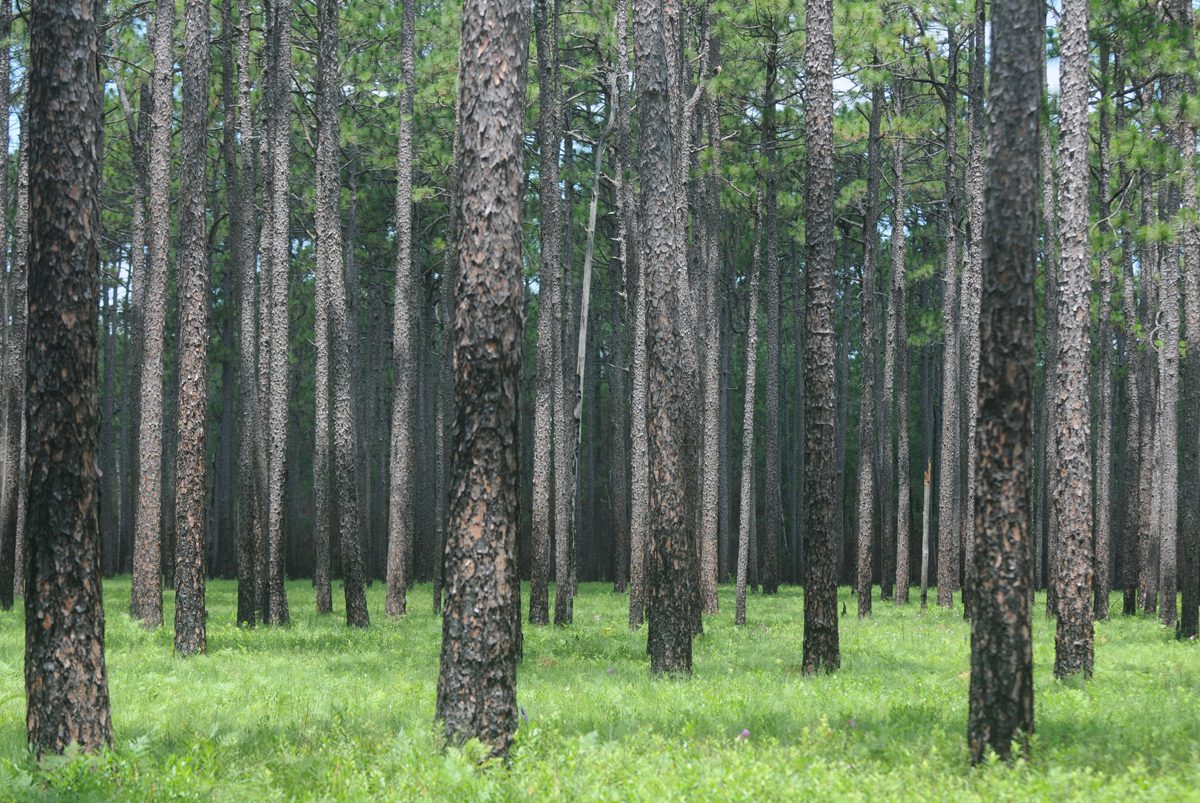
Fire is good for forests. See for yourself.
The Nature Conservancy invites you to explore the Green Swamp Nature Preserve from the comforts of your own home and see firsthand how thousands of acres are regenerating after burning in a wildfire last June.
Supporter Spotlight
The conservancy recently launched an interactive map that takes the user deep into the forest to reveal new life emerging in the weeks and months since a wildfire burned nearly 16,000 acres.

The story of the fire in the Green Swamp has the eye-catching title “Pulp Road Wildfire. 15,642 acres burned – 15,642 acres revitalized.”
Using ArcGIS StoryMaps, an online tool created by American geographic information system technology software company Esri, Emma Gwyn, a GIS stewardship intern for The Nature Conservancy — North Carolina in Wilmington, created the story of how the fire benefited the preserve.
Visitors of the site can click on different areas of a map of the preserve to learn about the variety of unique plants and wildlife that call the area home, watch drone videos, view before-and-after images, and a 91-day time-lapse of a pocosin wetland regenerating after the fire.
“It’s still there,” said Nathan Burmester, the conservancy’s coastal plain stewardship manager. “It’s flourishing. It’s better than it was before.”
Supporter Spotlight
That may come as a surprise to those who assumed much of the 17,424-acre preserve, known for its Venus flytraps, pitcher plants, and decorative orchids, lay in a charred, dead heap following the June wildfire.
But fire is just what the preserve’s two main ecosystems – longleaf pine savannah and pocosin wetland – need to thrive.
As explained in the virtual tour, longleaf pine savanna need low-intensity fires every two to five years. Pocosin, which are freshwater shrub wetlands of the southeastern coastal plains, require high-intensity fires every eight to 20 years.
“Even though a high-intensity fire in the pocosin may look catastrophic, the system recovers incredibly quickly,” according to the conservancy.
“It’s always one of our messages that we’re trying to get out is the importance of controlled burning,” Burmester said. “Part of my goal for making this was to have more education for the public.”
Whether sparked by a cigarette discarded from a car window or a lightning strike, forests are going to burn “someday, one way or another,” he said.
“When that happens, we don’t get to pick the day. We don’t get to pick the weather. So, we’re always trying to get out the importance of controlled burning,” Burmester said.
The Green Swamp fire began as a prescribed burn by the North Carolina Wildlife Resources Commission on June 14 around Pulp Road in Brunswick County.
Related: Green Swamp now turning green again after burn, wildfire
The commission had a permit to burn 400 acres, but the blaze spread after the fire jumped its line and quickly spread into areas that had not been burned in years.
“The smoke was so intense that it sparked thunderstorms nearby!” according to the conservancy.
Winds pushed ash more than 30 miles away to Wilmington and air quality warnings were issued throughout the region before June 29 when the fire was fully contained.
The fire left a black and green patchwork-like landscape across the preserve. Green areas are those that were either too wet or had been burned in a series of controlled fires prescribed within the past year.
These areas served as “critical refuges” for wildlife during the June wildfire.
Burmester said that the preserve was last burned in its entirety 68 years ago.
That equated to 68 years of fuel for some areas of the preserve. There are no roads in the swamp to break the land into smaller chunks. The shrubby, wet pocosin can’t be sliced with fire lines.
“They’re extremely challenging to burn because they’re large pockets of non-divided fuels,” Burmester said.
He said that experts from various agencies, including Wildlife Resources and forest service officials, have begun talks on how they can turn the June wildfire into an opportunity to administer controlled burns in the future.
In the meantime, he encourages people to engage in the Green Swamp fire story.
“The tool’s out there so anything you want to do and show in a map feature is there, which is really cool,” Burmester said. “Enjoy and be creative.”








